So the amount of days of this rapid ideation session are into double figures. This is the tenth day of the rapid ideation session. I have now have only three full days of this session left.
Today, I continued my research into level design and to help me, I read a chapter on level design from the book Level Up: The Guide to Great Video Game Design (Rogers, S., 2014). The chapter did not offer much on the actual mechanics of how to design a level as ultimately, design is only limited by the imagination of the designer. Having said that, the chapter did have some great points about what makes a good level design.
The thing I took most from reading this is that in order to make a level design more interesting to the player, there should be plenty of obstacles and to further enhanced the level, there should be sections in the level that the player can explore. The chapter also had advice about making each level challenging to varying degrees and using different types of obstacles, as well as styles to give each level its feel.
In order to get better at level design, the best thing is generally to get sketching. I used several of the examples in the book to help me work out how I should draw up my design. However, I have come to realise that deisgning a level for a 2D side view platformer is perhaps more challenging than with a 3D game or a top down game, primarily because of the restriction of gravity. Having said that, the chapter does emphasie that I do not need to worry too much about realism when making my game fun and playable.
Studying level design also took me back to the challenge activity of week 3, where I reverse engineered a level of the Talos Principle to work out how levels, and indeed the obstacles within levels, are designed.
With this knowledge, I decided to start drawing up some potential levels for my game. As my game is about the last living being on a planet, it would be somewhat contradictory to have sentient enemies, so I decided to design my levels with numerous deadly obstacles.
Here are some of the levels I came up with:
Level concept 1
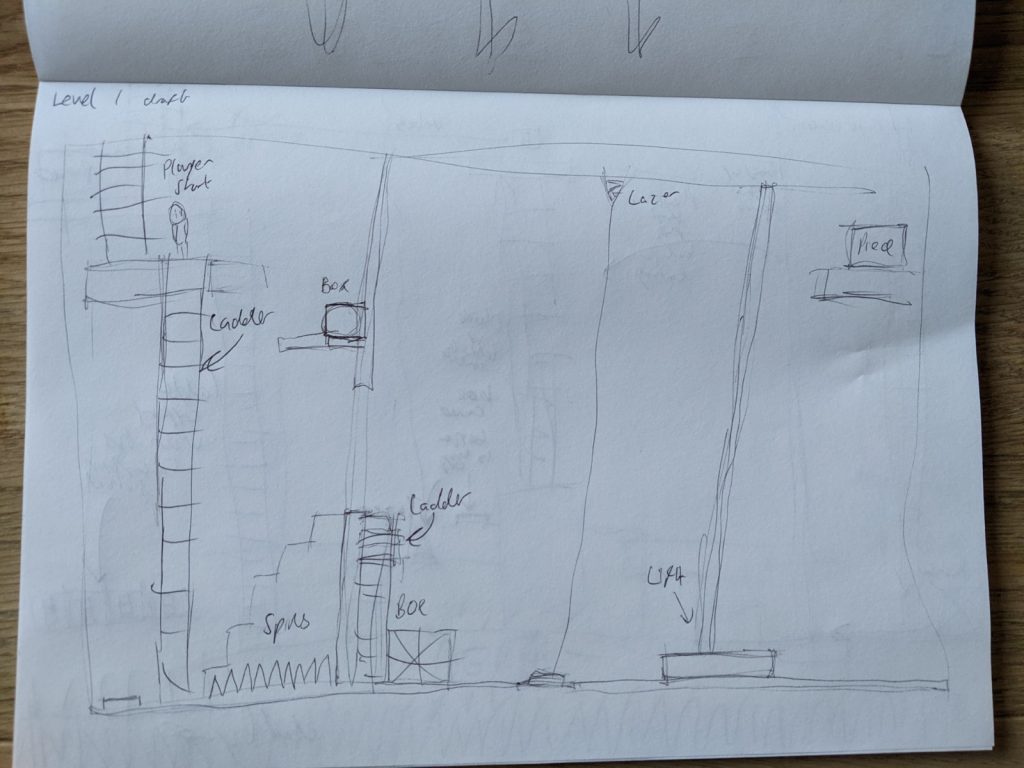
This was the first one I drew up. In this one, the player climbs down a ladder into thew level. They must jump across to the platform with the box and then push it down to the ground. The must then push the box onto a button to generate a stairs to the next section. Once they enter the next section, they must push the box to block the lazer and activate the lift to the platform for the rocket piece.
This was my first go but I think this one may be a bit too confusing for the player.
Level concept 2
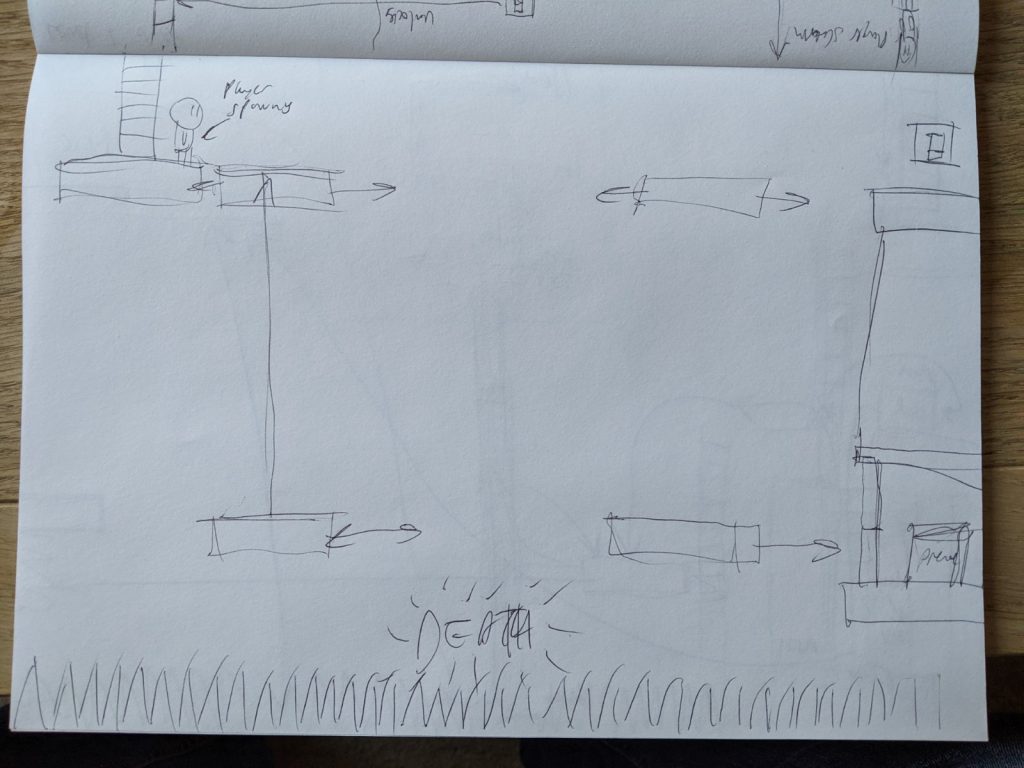
In this one, the player climbs into the level. There are four platforms that move in varying patterns and paces. The player needs to time their movements between the platforms. They must use the platform to get to the switch they they need to turn on to unlock the section with the rocket piece. Once they have retrieved the rocket piece, they must use the same moving platforms to climb out of the level. They must time their movements carefully or risk falling on the spikes below.
This is a nice simple one and would make a good candidate for the first level. It may be challenging for the player but not frustrating. It will also help me to develop knowledge of animation in Unity and would be a good challenge for using timing as an obstacle.
Level concept 3
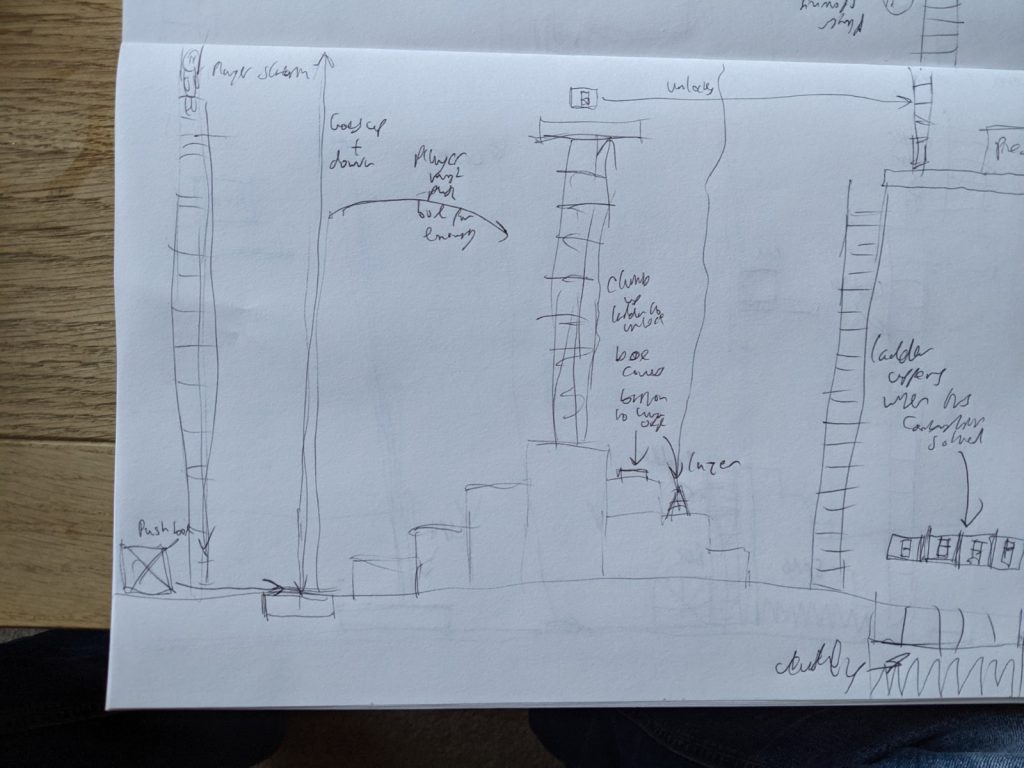
This one involved pushing a block onto a lift that moves up and down and then timing the position of the lift to push the box onto a button which shuts down the lazer. The player must then climb up the ladder and turn on a switch to unlock a door. FInally, to activate a ladder to the final rocket piece, they need to switch each of the switches above a pit of spikes into the correct combination. If they get the combination wrong, the ground opens and they fall in. If they get it right, the ladder appears and they can retrieve the piece.
This level is challenging but the part with the box and the button may be confusing and the switch combination could become frustrating.
Level concept 4
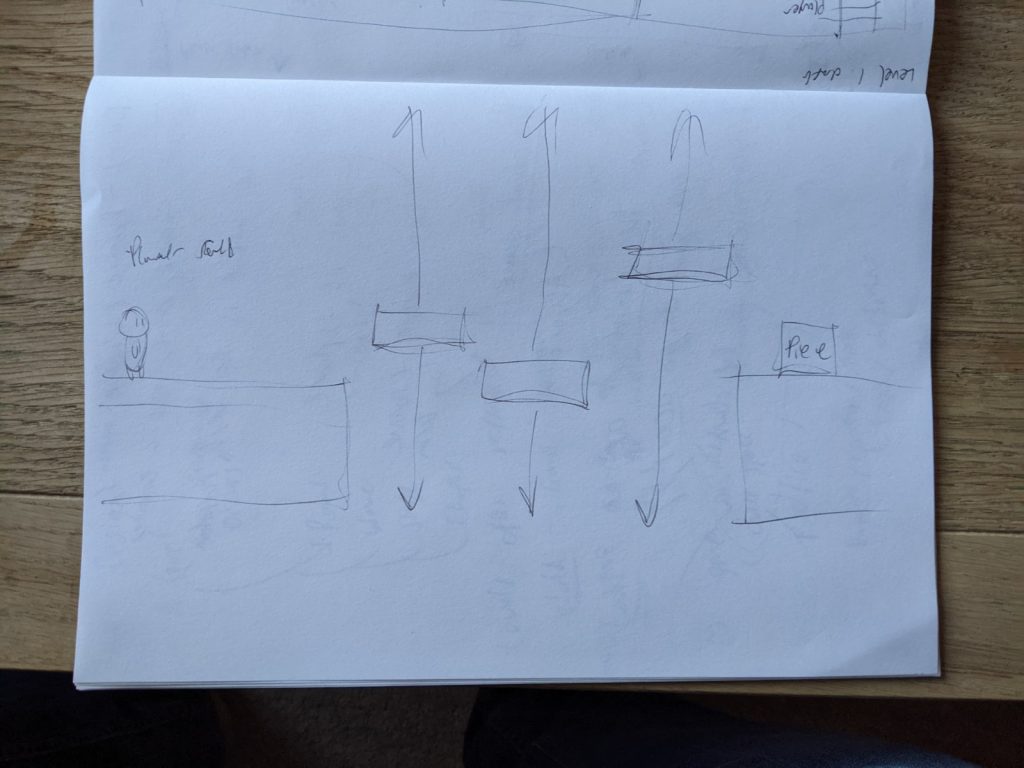
In this one, the platforms move up and down at different paces and the player has to move across them to retrieve the rocket piece and then back again.
This level would probably be very easy to build but would offer very little challenge to the person playing.
Level concept 5
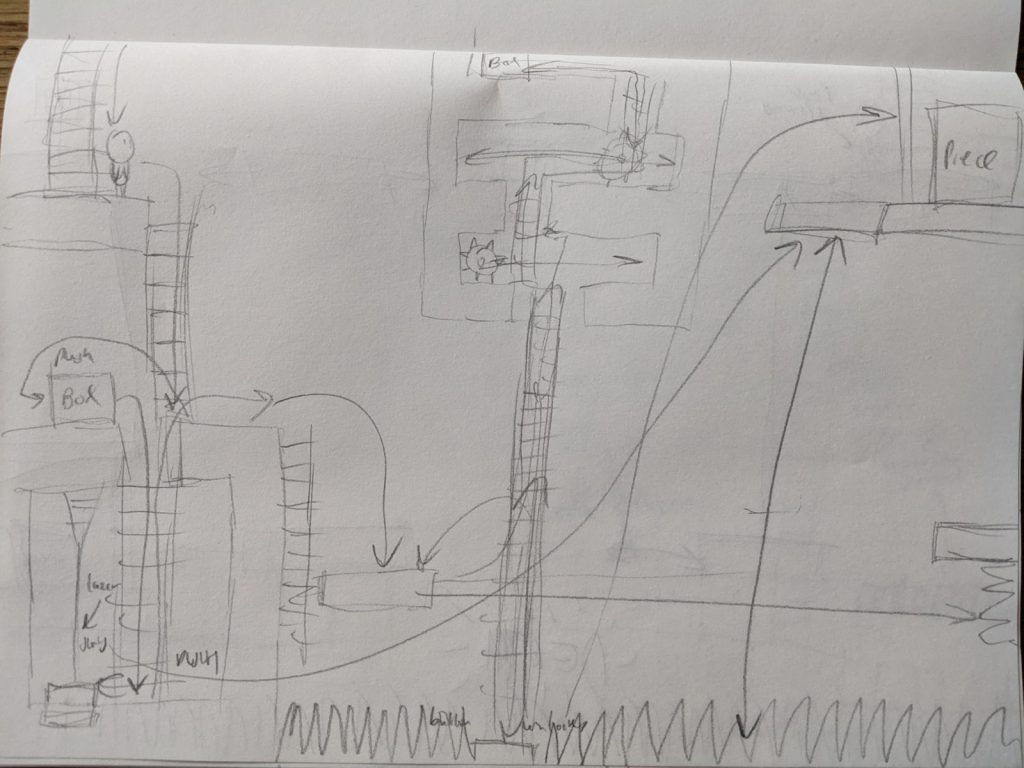
Probably my favourite and also most challenging level design. The player climbs into the level by a ladder. They must first push a box into a compartment with a laser and then further push it under the laser to unlock the door to the rocket piece. Once they have done this, they need to jump on a moving platform, climb up the ladder and then go through compartments, avoiding balls with spikes that move left ot right, until they get to the top. Once they are at the top, they get to the box and push it down each part until they drop it on a button at the bottom which activates a second lift that moves up and down. They now need to get back on the left-right lift and change for the up-down lift to retrieve the rocket piece. In doing this, they must avoid the pit of spikes and also spikes on the wall.
This one could pose a nice challenge for me to build, as well as for the player to play. It has enough obstacles and also relies on timing.
Next stage
The next stage will be for me to choose one of these levels and then to attempt to build it in Unity. I will need to rely on tutorials to build various obstacles within my chosen level and I will also need to learn about creating functions for sprites to pick up items for an inventory, character death and respawn as well as environment animations. I will probably also rely on assets from the Unity Asset store and other sources to block out my level.
References
Rogers, S., 2014. Level Up! The Guide to Great Video Game Design, 2nd Edition. 2nd ed. Chichester: WIley, pp.209-255.
One Reply to “Rapid Ideation Session Day 10: Level designs”